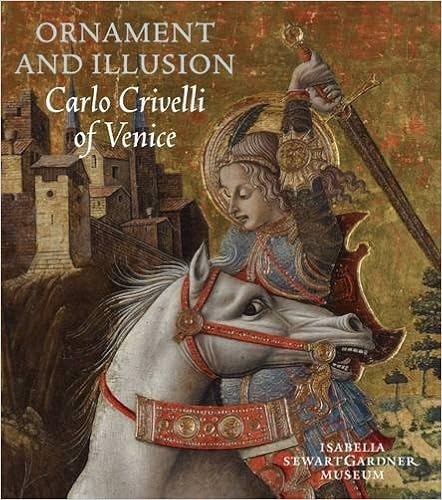 |
| Picture: Amazon |
Stephen J. Campbell (ed) Ornament and Illusion: Carlo Crivelli of Venice Paul Hoberton 2015 £35
Carlo Crivelli's sparkling pictures abound with spectacular, opulent detail. His beautiful pictures are immediately appealing, but his idiosyncrasy puts him outside the mainstream, hard to fit into the heroic teleology of the Renaissance. Vasari excluded him, and formalistic art historians thought him a bit retardaire. His appeal has come and gone; the National Gallery in London bought oodles of them in the nineteenth century, but came close to selling them in the twentieth. U.S. collectors bought them avidly in the early twentieth century, but his reputation waned as professional curators struggled to include him in the forward thrust of art history. An exquisite show at the Isabella Stuart Gardner has selected some of his very best pictures. I'm sorry that I can't visit, but there is some compensation in the excellent catalogue.
Crivelli worked in towns along the Adriatic coast that make up the Marches, across the mountains from Florence and Rome and south of Venice. The map in the catalogue doesn't do justice to the mountainous geography, which meant that these places were connected more to the maritime trading routes from Venice to the Balkans, down to the Ottoman Empire rather than to Florence and Rome. Even today it's easier to travel north-south than east-west. There were still abundant cultural transfers; Piero della Francesca worked here, importing the most sophisticated understand of perspective. An interesting observation from Stephen Campbell is that whereas Florentine patrons backed their own and supported the development of a local school, Marchigean patrons appreciated different styles. It was not that they were necessarily backward and traditional, but rather that their more ecumenical taste gave scope for Crivelli's individuality, which he may have developed in conscious opposition to those fashionable Florentines.
The catalogue successfully (& rightly) rescues Crivelli from the rather staid strictures of certain art historical traditions. I loved the opening of Jean Campbell's chapter, which criticises the wall text on the Rijksmuseum's Crivelli for treating him as an illustration of the International Gothic style, as if artists are producing slides to illustrate art history lectures. Go get 'em! The editor's introductory chapter seeks to rescue Crivelli from both the "need to see art as a kind of geographic or ethnic expression, like a local dialect, and on the other to see style in terms of questions of artistic problem-solving, synthesis, and an internalized impetus toward modernization" (p. 23), and also from 'material historians' for whom "style can be understood less as an internal morphology of form than as an index of social and political affiliations and exchanges" (p.23). I appreciated the gently implied critique of Lisa Jardine and others for building a new reductionism from their criticism of the old.
It's become standard to include a chapter on the history of collecting in monographic catalogues, but they're too often just cobbled together comments on provenance. Francesco de Carolis's chapter is exemplary, going much further into the detail of his differential reception, including a flurry of interest in the eighteenth century. He adduces good evidence for his particular favour in the U.S. early in the twentieth century, but I always think that contingencies of availability are insufficiently appreciated. Collectors buy what they like and what is valued, but also what is available on the market.
The short essays are well-written and dense with information, and there are full entries for all exhibits. The production is superb, with fabulous reproductions that capture the three-dimensionality of Crivelli's pictures, which incorporated moulded elements in plaster and wood. Above all Crivelli's pictures are a joy to look at, and it is a tribute to the catalogue's scholarship that it recognises Crivelli's value in his own terms rather than as illustrating an academic thesis.
The book has one flaw: its referencing. Endnotes appear after each chapter, so you have to keep skipping around each time you start a new chapter. Then the endnotes use Chicago referencing, sending you to the consolidated bibliography at the back to find the sources. The system proved to complicated for the proof readers, because some references can't be found (Di Stefano 2009, Feldman 2014, for example). It reflects well on the authors that I wanted to consult their sources, but it reflects badly on the publisher that I couldn't.
No comments:
Post a Comment